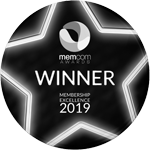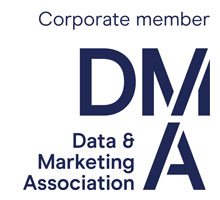Level the procurement playing field
 As the reach of client procurement seems to extend ever deeper into marketing services, more market research companies are finding themselves in tougher and more painful negotiations. Negotiation expert David Meikle gives insight into how to hold your value in the procurement process and build a more productive client/agency relationships.
As the reach of client procurement seems to extend ever deeper into marketing services, more market research companies are finding themselves in tougher and more painful negotiations. Negotiation expert David Meikle gives insight into how to hold your value in the procurement process and build a more productive client/agency relationships.
It seems to be getting tougher out there. The reason being that most people in marketing procurement begin their quest to find ‘savings’ by working their way through a spread sheet of marketing spend categories, starting with the highest; and as marketing procurement has matured, more and more are interrogating the lower-spend categories like market research to hit their savings targets. With the buying power of many of the biggest brands increasingly pitted against research companies how can you protect your margins? There are a few key steps to navigate the procurement process successfully.
1. Frame the benefit of your service
Procurement is used to buying things that are more tangible than services that involve research, strategy or creativity. Procurement’s sophistication in marketing procurement is highly variable from the informed and strategic to the baseball bat and crash helmet. Market research companies provide a variety of services from the more tangible and defined (e.g. subscriptions to off-the-shelf market data) to what I would encourage you to describe as solutions to problems that have unlimited possible solutions (e.g. usage and attitude studies, market segmentation, qualitative and qualitative research and interpretation). As such, these services must be considered investments, not costs. And investments have to be handled differently to costs.
2. Investment and costs
There is a fundamental difference between costs and investments, and as obvious as it may seem, it will serve you well to remember and to remind others. Costs are generally undesirable, if we can avoid them we will. When we pay for a cost, we know what we will get for it, thus if we could pay less for the same then we would. Investments, on the other hand, are desirable, insofar as we make them in the hope and expectation to achieve a return greater than the principal.
3. Risk and investment
Investments in marketing services are no different to any other investment. Risk and return are inextricably related. If we reduce our investment we are either knowingly or unwittingly increasing our risk of achieving the same or a higher return, or we should simply expect a lower return. The function of procurement is as responsible for risk avoidance as it is cost savings. And an investment is essentially a value judgment. Clients can invest a little in a quick and dirty research but they run a greater risk of reaching the wrong conclusion. Or they can invest a lot in thorough, detailed, depth research and the chances of them getting it wrong are mitigated. If you spell this out to procurement and they still want to make a reduction of their investment, perhaps you could see what the insight or marketing departments think of the implicit risk?
4. Procurement is a service
It’s often not clear to vendors, but procurement departments are service departments for others in their organisations. Procurement rarely, if ever, have the authority they often imply they have, but instead they are usually accountable to the department for which they are procuring goods or services; accountable to them for quality and cost – and now also risk.
5. Dependency
Most importantly, market research is a unique component of the marketing investment mix. The effectiveness of all other marketing investment relies on the integrity of research services like market segmentation, opportunity analysis, targeting, proposition research or consumer insight (the list goes on). So, of all the different elements of marketing investment available to procurement, why would it be wise to divest from research? It’s a bit like taking part in a trans-Sahara motor rally and buying a cheap map. When you combine this principle with point 2 above, not only is the risk of flawed research increasing when investment is reduced, but it is increasing risk across every aspect of the marketing mix that depends upon that research.
Buying a gorilla
One of the key tenets ofHow to Buy a Gorilla is that different clients have different business problems, and therefore different business problems require different risk profiles, and different risk profiles require different ways of working. And this is the win-win for the market research business.
If your client is a market leader, logically they shouldn’t even consider divesting from the kind of intelligence that got them to that position in the first place. But, if your client is a challenger brand there is even more at stake. Therefore, market research and intelligence should be the part of the budget they refuse to compromise. So, from a strategic position there is no argument for reducing research agency fees. The only way they can do it is if:
1) Your services are overpriced
2) You willingly drop your price
Often, the timing of financial negotiations is when the client will have just completed a process to determine that your particular agency is the best one they could possibly choose. It’s not unusual for procurement to ask for money off at the end of that process in the hope that the supplier will give it to them, but it isn’t necessarily their expectation. Not only that but, compared with the other marketing budget levels, market research is usually pretty modest.
Put another way, market research has the highest cost-to-value ratio of any part of marketing expenditure.So how can you persuade your client that your prices and investment recommendation should be left intact? There are a number of ideas and techniques you might want to deploy:
a) It’s not about you
One of the most difficult instincts to overcome in a negotiation is focusing on your own needs—when in a confrontation, we naturally think of ourselves. We tend to think about our profit, our challenges to deliver—whatever the consequences of a tough-negotiated deal will be on us. Instead we should talk about them. “Well, we can do less for less, but that will increase your risk…”
b) Start with no
We generally avoid beginning a negotiation with a “no.” We think it’s too final. We think that it’s irreversible. Start by standing your ground, it’s often a lot firmer underfoot than you think.
c) Appeasement is not a negotiation strategy
Appeasement as a strategy is like throwing steaks to a lion in the hope it will become vegetarian. If you need to make a concession it must be in exchange for something else. Every good negotiator should have a wish list: additional projects, minimum income guarantee, payment terms. Any concession must be accompanied by a demand.
But the final thing you need to know before you start negotiations with procurement is the nature of the animal you’re dealing with. Most people in marketing services organisations—be they ad agencies, media agencies or research agencies—have a day job that they do of which negotiation of fees is just one part. People in procurement, on the other hand, negotiate or prepare to negotiate for their day job. It’s a huge part of what they do. When facing such a prospect, the words of Abraham Lincoln may point the way:
“If I had eight hours to chop down a tree, I would spend six sharpening my axe.”
David Meikle is author and founder of How to Buy a Gorilla: a negotiation training, consulting and relationship management consultancy.
Negotiation Strategy in Market Research– 11 December
David Meikle delivers the MRS negotiation strategy course designed to firm up your negotiation skills and enable you to hold your value in the procurement process.
Get the latest MRS news
Our newsletters cover the latest MRS events, policy updates and research news.















